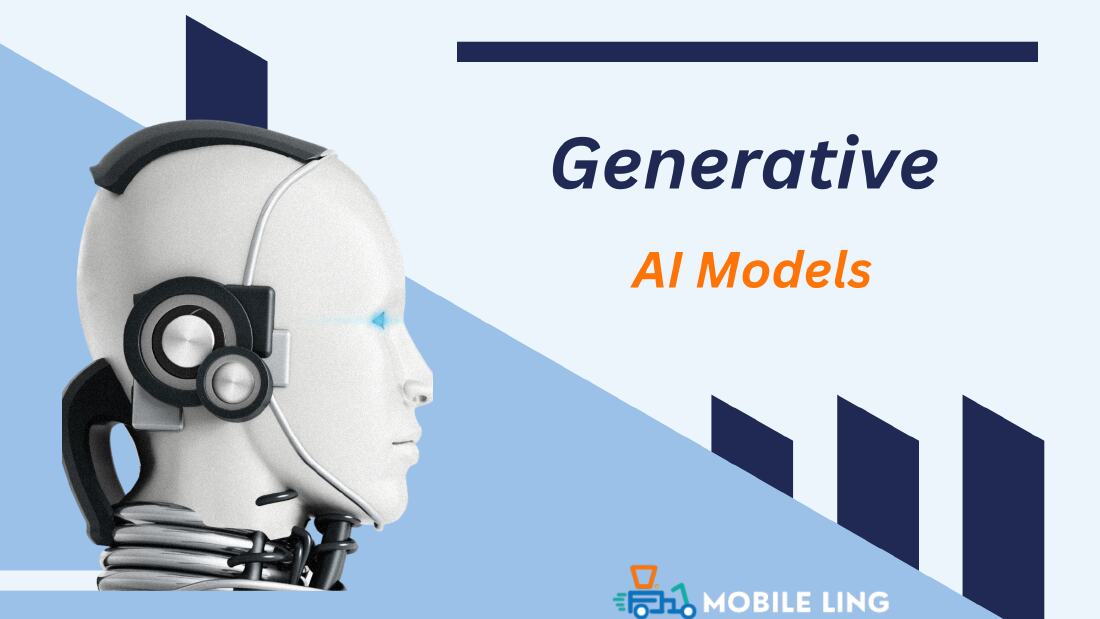What Is Generative AI?
Generative AI, often called artificial intelligence, can generate diverse forms of content, such as text, audio, video, code, images, and other data types. Unlike conventional AI algorithms that primarily focus on recognizing patterns and making predictions, generative AI models leverage advanced machine learning algorithms to create outputs based on a given training dataset.
The scope of generative AI extends to producing content in the same format as the provided input prompt, like text-to-text, or even in different formats, such as text-to-image or image-to-video. Several renowned examples of generative AI systems include ChatGPT, Bard, DALL-E, Midjourney, and DeepMind.
Key Takeaways
- A subset of machine learning called generative artificial intelligence, commonly called generative artificial intelligence, can produce several kinds of material, such as text, video, photos, and more.
- Examples of generative AI software include ChatGPT, DALL-E, and Bard, which create text or graphics in response to user input or conversation.
- Creative and academic writing, translation, audio editing, infographics, image editing, architectural rendering, and other fields—including automotive, media/entertainment, healthcare, and scientific research—all benefit from generative AI.
- Concerns about the law, morality, politics, the environment, society, and economics are brought up by generative AI.
What Is the Process of Generative AI?
Machine learning, which includes training software models to make predictions based on data without explicit programming, is the field in which generative AI functions. The models are trained on enormous datasets of current material to discover underlying patterns and probabilities in the case of generative AI.
The models produce outputs in response to a prompt using these learned patterns.
Deep learning, machine learning that uses neural networks to handle complex patterns, is a category that includes generative AI. Inspired by the human brain, neural networks can find patterns in training data without human intervention.
Transformers, Variational AutoEncoders (VAEs), and generative adversarial networks (GANs) are a few examples of models that can be used to create generative AI.
Interactive Generative AI AI’s extensive use has changed how users engage with technology. For instance, voice-activated AI is now included in many gadgets, including speakers and smartphones. Similarly, generative AI may be accessed and used through various software interfaces, making it more widely available.
Interfaces of Generative AI
Here are a few well-known illustrations of generative AI interfaces:
ChatGPT:
OpenAI created ChatGPT, an AI-driven chatbot that converses with users in natural language. It can converse, respond to queries, and produce writing in various genres or styles, including poems, essays, stories, and recipes.
Online resources for ChatGPT include a free version, and OpenAI also provides an API, enterprise subscription plans, and embedding choices.
DALL-E:
OpenAI unveiled DALL-E, a generative AI system, in January 2021. Based on user-provided written descriptions, it produces lifelike pictures. Users can provide descriptive text, and DALL-E will produce images with variations in perspective and style in response. Additionally, it has tools for manipulating images.
Bard:
Bard, a tool developed by Google, powers Bard, a text-to-text generative AI interface. is a chatbot that, like ChatGPT, responds to user inquiries with text-based responses or produced text. It is seen as an enhancement to Google Search.
History: The Generative AI
Although artificial intelligence has existed since ancient Greece, modern AI didn’t take off until Alan Turing’s study and creation of the Turing test in the 1950s.
Frank Rosenblatt created neural networks, the building blocks of generative artificial intelligence, in 1957. As neural networks continued progressing, they became widely used in AI in the 1980s.
In 2014, the development of generative AI applications for producing images, movies, and audio was made possible by the invention of generative adversarial networks (GANs). In 2023, the emergence of sizable language models like ChatGPT will reflect the expanding acceptance and variety of uses of generative AI.
What Is the Use of Generative AI?
A wide range of companies and areas can use generative AI. Its versatility in terms of media has made way for innovative and lucrative opportunities. New use cases keep developing as businesses and industries incorporate generative AI into their workflows.
A few recent uses of generative AI models are as follows:
Models in Language:
- Translation
- Writing in the arts, sciences, and business
- Code creation
- Genetic analysis
- Modification or examination of the grammar
Speech and Audio Modeling:
- Writing music and composition
- Dubbing
- Transcription and dictation
- Voice and speech recognition
- Audio editing
Imagery and Visual Models:
- Illustration
- Infographics
- 3-D modeling
- Innovative style
- Image retouching
- Construction rendering
Models for Producing Data:
- Generating artificial data to train AI algorithms
Generative AI: Services by Industry
The applications of generative AI are expanding as technology progresses across some industries. Here are some instances of recent applications in various fields:
Industry of the automobile: Autonomous vehicle training and simulations use artificial intelligence (AI)-generated synthetic data.
Science and medicine: AI helps researchers model protein sequences, find novel molecules, and recommend therapeutic compounds. It helps physicians analyze medical images for more accurate diagnoses.
Media and Entertainment: In the media and entertainment industries, AI can swiftly and cheaply produce content, improving the work of creatives like writers and designers.
Meteorology and climate science: AI models can simulate natural disasters, predict the weather, and model future climatic scenarios.
Education: Chatbot-based tutoring and AI can provide course materials and online learning environments to supplement traditional classroom instruction.
Government: Since 2022, information regarding the various government ministries’ uses of AI has been made available to the public.
Additionally, generative AI can automate repetitive operations in any business, including process optimization, minute-taking, documentation, coding, and editing.
The Pros and Cons of Generative AI
The Pros of generative AI include:
- Increased output as a result of work acceleration or automation.
- Reduced time or expertise requirements for programs that generate content.
- Improved complex data exploration and analysis.
- Creating artificial data to improve and train other AI systems.
However, there are Cons to take into account:
- Hallucination: Some AI models may produce illogical or false information contradicting the truth or logical common sense.
- Data labeling dependability: While many generative AI models can unsupervised learning, preserving data quality and authenticity is still difficult. Businesses frequently use contract employees for activities like data labeling.
- Problems with content moderation: AI algorithms need help identifying and removing offensive content. Reviewing and removing inappropriate or potentially harmful content frequently calls for human intervention.
- Ethics: Algorithms may unintentionally increase biases and discrimination found in training data, having detrimental effects. Amazon’s biased hiring tool demonstrated the unethical issues with generative AI.
- Legal and regulatory issues: The ramifications of developing AI technology are difficult for legal systems to manage. Concerns about generative AI include those related to copyright, privacy, liability, and political ramifications.
- Energy consumption: AI models use a lot of electricity, which impacts the environment as their use rises.
EndNote
The fascinating field of generative AI development company holds great promise for revolutionizing many facets of our lives and professions. While plain language communication with AI systems has democratized access to this technology, AI was previously only available to data scientists and professionals. However, implementing generative AI development company also brings up significant issues and difficulties. As technology advances and is integrated into more fields of use, legal, ethical, political, ecological, social, and economic ramifications must be carefully considered.
Also Read:






[…] http://mobileling.com/generative-ai-models/ […]
[…] phrases on the fly, with consistent practice you may overcome any difficulties. In addition, the generative AI models decide on a topic and discuss it in English. Take a few minutes to plan out your thoughts, and then […]
[…] Learn about the fascinating world of generative AI models: its workings, history, the pros and cons. Discover the power of AI creativity! […]
Siteground: Siteground is known for its exceptional speed and advanced security features. They provide excellent customer support, automatic backups, and a user-friendly interface.
HostGator: HostGator is known for its affordable plans and reliable performance. They offer unlimited storage and bandwidth, a variety of hosting options, and excellent customer support. [url=http://webward.pw/]http://webward.pw/[/url].